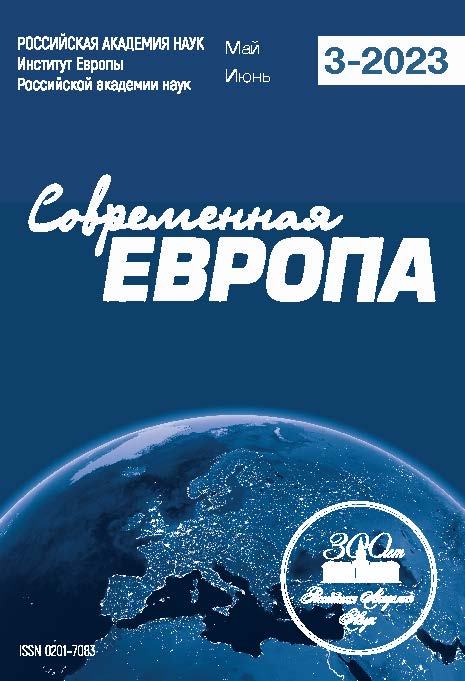The EU assistance in solving the problem of scientific and technological development of Jordan
- Autores: Shugurov M.V.1
-
Afiliações:
- Altai State University
- Edição: Nº 3 (117) (2023)
- Páginas: 68-81
- Seção: Articles
- URL: https://clinpractice.ru/0201-7083/article/view/652239
- DOI: https://doi.org/10.31857/S0201708323030063
- EDN: https://elibrary.ru/BRRDJS
- ID: 652239
Citar
Texto integral
Resumo
The peculiarities of the policy of contemporary Jordan in light of shortages of natural resources and problems of a socio-economic nature include stimulation of the research and development sector, as well as the creation of an effective innovation system. The purpose of the article is to conceptualize the priorities, main directions, forms and results of the European Union's assistance to scientific, technological and innovative development of Jordan since 2010s. The study reveals the synergy of EU assistance in the implementation of Jordan's policy to strengthen its competitiveness in the field of science, technology and innovation in the form of programs and projects at the multilateral and bilateral level. The article substantiates the conclusion about the contradictory nature of the results of this assistance. While it increases the research potential of Jordan, the EU is not interested in integrating the country into global value chains. This leads to a slowdown in its economic development and simultaneously to a slowdown in the development of the national innovation system due to the lack of effective commercialisation of knowledge and technologies in the national and international markets. Jordan's integration into the European Research Area involves solving a number of problems, for example, participation in the process of establishing priorities for regional cooperation in science and technology.
Bibliografia
- Демченко А.В. (2013) Российско-иорданские отношения в начале XXI века: достижения, проблемы и перспективы. Вестник Московского университета. Сер. 25: Международные отношения и мировая политика. № 3. С. 100-138.
- Федорченко А.В. (2010) Экономическая интеграция на Ближнем Востоке: достижения или упущенные возможности? Вестник МГИМО-Университета. № 10. С. 266-275.
- Шугуров М.В. (2022) Перспективы сотрудничества ЕАЭС и Иордании в научно-технологической и производственной сферах: правовые аспекты. Вестник Саратовской государственной юридической академии. № 5. С. 82-91. doi: 10.24412/2227-7315-2022-5-82-91
- Alwedan S. (2022) The State of the National Innovation System of Jordan: Key Actors Perspective. Dirasat. Human and Social Sciences. Vol. 49. No. 5. Supplement 1. Р. 73-86.
- Benner M. (2020) A New Arab Social Contract? Institutional Perspectives for Economic Reform in Arab Countries. Springer, Cham, Switzerland. 192 p. DOI: https://doi.org/10.1007/978-3-030-19270-9
- El-Zoheiry A., Hudson J., Beiras M. (2020) Technology Transfer in Jordan 2019-2020. European Commission Joint Research Centre, Brussels, Belgium. doi: 10.2760/727519
- Haddad C., Benner M. (2021) Situating Innovation Policy in Mediterranean Arab Countries: A Research Agenda for Context Sensitivity. Research Policy. Vol. 50. No. 7. doi: 10.1016/j.respol.2021.104273.
- HCST, Nesta (2019) Understanding the Jordan's Innovation System. HCST, Amman, Jordan. 51 p.
- Rosshandler K.Sh. (2021) Reflections on EU-Jordanian Cooperation: Towards Tertiary Economics. EuroMeSCo Euromed Survey. Vol. 11. P. 128-137.
- Sarto R.A. (2021) Del Borderlands: Europe and the Mediterranean Middle East. Oxford University Press, Oxford, UK. 196 p.
- Soler M.G., Perez-Porro A. (2021) Science and Innovation Diplomacy in the Mediterranean. Union for the Mediterranean, Barcelona, Spain. 18 p.
- Sultan S.S., Soete L. (2012) Innovation for Development: the Case of Jordan. Dirasat. Administrative Sciences. Vol. 39. No. 2. Р. 321-327.
- Zając J. (2014) European Union Policy in the Mediterranean: An International Roles Theory Approach. University of Warsaw Press, Warsaw, Poland. 205 p.
Arquivos suplementares










